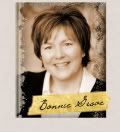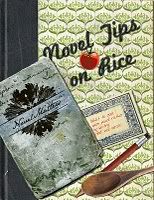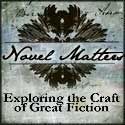 Like all elements of fiction writing, storyworld is multifarious. It isn’t a stand alone concept but is a composite of components that are, in and of themselves multifaceted.
Like all elements of fiction writing, storyworld is multifarious. It isn’t a stand alone concept but is a composite of components that are, in and of themselves multifaceted.Storyworld is exactly what it says it is: the world in which your characters live, breathe, and have their meaning. It goes beyond setting. It is the expression of your characters. Storyworld “shows” your hero’s personal growth as it morphs and changes throughout the story.
In this way, writing fiction is the opposite of real life. John Truby puts it this way, “In good stories, the characters come first, and the writer designs the world to be an infinitely detailed manifestation of those characters.”
The key here is “manifestation of those characters.” Storyworld isn’t separate from your characters. It isn’t a rigid space that existed before your characters came into existence. The space your story takes place in (a house, a town, a city, a jungle) represents your characters. And it changes as your characters change.
Where do you begin building your storyworld for your characters? It starts by knowing exactly what kind of story you are writing. I’m not referring to genre. I’m talking about story structure, the bones of the kind or type of story you want to tell and how you want to tell it.
This is a difficult step that will take a great deal of time to work out. I’m against formulas in fiction writing as a rule, but I will offer you this “formula” for puzzling out how to decide story structure because it is an organic one rather than paint by numbers.
Story process + original execution = Story structure
Here are some examples of this formula:
The Time Traveler’s Wife: A time traveler learns to love his wife and leave a legacy for his child knowing he will die at age 43. (Story process: love story. Original execution: he is a time traveler, plus the ticking clock of his approaching death)
The fact that The Time Traveler’s Wife is a love story means that the storyworld is largely made up of man-made, indoor spaces where people are thrown together in intimate ways. Apartment, house, crowded bars, even the library where he worked. He moves from man-made space to man-made space and each move is more claustrophobic than the last. Only the sprawling meadow (a natural arena that juxtaposes the man-made arenas in the rest of the book) by Clair’s childhood home provides a utopia for Henry. There, he falls in love and becomes a man. This made it all the more poignant when Henry meets his demise in the meadow.
Notice the amount of detail that went into creating this shifting, intimate, and yet menacing world? The storyworld expressed Henry, not the other way around.
Here’s and example from John Truby’s book The Anatomy of Story:
It’s a Wonderful Life: Express the power of the individual by showing what a town, and a nation, would be like if one man had never been born. (Story process: dystopia to utopia = fairy tale. Original execution: An angel shows George two versions of his small town.)
Storyworld: Two different versions of the same small town in America.
Because the structure of It’s a Wonderful Life is a fairy tale, it requires a kingdom in which the characters live and our hero rules over (in this case a small town). And, because the original execution is two towns, every element of the first kingdom had to have a contrasting element in the second version (which also had a different “king” the banker, Mr. Potter). No detail could be missed from the buildings, to the town’s name, to the weather, to the moon overhead.
Your storyworld is no less detailed.
The good news is, your storyworld has set boundaries which you erect around it. The drama of your novel will take place inside of these walls. When you think of your novel, you need to think in terms of contained space. Where are the boundaries of your story? Is it a town, a city, an island, a house, a boat, a shoreline, a hut, a jungle, etc.?
If your story structure requires multiple worlds (for example: Harry Potter, Alice in Wonderland, Wizard of Oz, Pleasantville, etc.) you must connect the worlds in some fashion. My newly completed manuscript takes place on an island off the East coast, but I have a man-made space on the mainland that I need to include in my storyworld (it symbolizes futile attempts to attain wellbeing outside of the character’s organic storyworld); therefore I used the system of ferry service as a bridge between the two worlds. That meant that I needed scenes on the ferry, and that the ferry itself be organically part of the larger storyworld.
This is only the tip of the iceberg, a brief introduction to the topic of storyworld. There is a great deal more to consider based on the specific story structure you will use, and the original execution you will employ.
The key is to remember that the world your characters live in is a manifestation of those characters.
Thoughts? Also, feel free to ask any questions or for clarification. I’ll do my best to engage with your ideas and ponderings and together, we might come up with something helpful.












12 comments:
Nice work Bonnie, I've not read anything like this before. I'll have to read Truby's book.
I'm left thinking of One Flew Over the Cuckoos Nest, which took place pretty much exclusively in the Mental Asylum, except for a scene towards the end, when they were all rediscovering themselves and their sense of living, and went on an excursion out on a boat. So much symbolism. So much to think about. Awesome!
Thought-provoking and useful, I think....
This is great, Bonnie. Thank you.
I have a lot of storyworld thinking to do as I contemplate my next novel. Hmm...
How do I go about making a setting element already in my WIP more than just a setting element--an expression of the change in my character? (a bridge, a cave)
This is very profound and very interesting. I'm going to have to re-read and let it all soak in.
Megan: It's an approach to storytelling that supersedes the medium (be it film, short story, novel, comic book).
You hit the nail on the head when you talked about symbolism. Great novels connect characters to symbols in order to draw the reader's attention to the underlining values of the story.
Marian: Thanks!
Susie: I hope you have fun contemplating that storyworld! Let me know how it goes.
Vonildawrites: You would do it in different ways based on where you characters are in the story journey when they need to make use of the bridge or cave or whatever it is.
There are some obvious symbols that leap to mind with a bridge, for example. It's a span that must be crossed, and the mid-point is where the hero is most vulnerable.
Narrow spaces are the best places for battle (meaning any confrontation between hero and opponent) because battles are (structurally) the same as love scenes. They are intimate.
I hope that's a good start. I don't know your story or where you are in the writing. I'm certain that you know the answers for yourself and as you contemplate this, they will rise to to the surface.
Karen: Glad you enjoyed it. There is a fair amount of information crammed into the article.
We Novel Matters women have been talking, and we are thinking about reposting this article in December with a part two following right after.
A great post! My mind immediately goes to books that both do and don't work on this level. This is the kind of attention in writing that separates literature from just a great story. A great story has one thing - the story. Literature has several layers, which includes things like this. I know you go through your completed novel (first draft, and even as the first draft is being written) several times, adding layer and depth.
When Leonardo painted the Mona Lisa, he used a coloured medium that needed many layers to build up to the full colour. This added a depth which could only be achieved through time and attention.
this can be added in both as one writes, and as one edits after, right?
Me. I'm voting for part 2. This is great stuff, Bonnie.
Please may we have some more examples (or a place to find a list) of 'story process'? Would this include 'coming of age' and 'journey' stories? If a story is 'coming of age' and 'love story' (or any combination of two story processes) does it have one that has elements of both or two that intertwine and does one have to dominate for clarity?
"Original" means unique, not foundational, right? This "execution" is what makes my story different from all the other fairy tales, yes?
Henrietta: All good questions. I will try to address these and more in a part two article on storyworld.
I know we all understand that the "formula" I included isn't really a formula in that it's not a hard and fast rule that needs to be followed or else you won't produce a rich storyworld.
Steve: Yes, layering is a big part of how I write (laying down the bones, then going back time and again to layer on substance). And storyworld is something a writer can absolutely layer on as they go along. I think it's a good idea to do some of the figuring out ahead of time so that you have an idea of what and where to layer, but much of that will become clear as you write.
Post a Comment